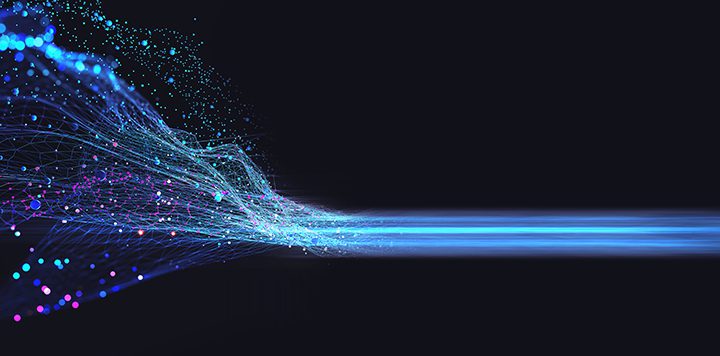
Enterprises collect and use more data than ever before. To make the most out of all this data, they build complex data pipelines, most of which are capable of handling over a million transactions per minute. To meet this demand, enterprises need to reliably handle high throughput data feeds with low latencies. This is because at this scale, even small mistakes can cost millions of dollars in avoidable additional expenses.
In order to optimize data operations, modern enterprises need a comprehensive, multi-dimensional, high-throughput, low-latency platform for real-time data feeds that can provide visibility and context into data pipelines that are handling on the level of trillions of events per day.
Enterprises that handle complex data pipelines and real-time data streams benefit from using Kafka along with a multi-dimensional data observability tool. Kafka can handle high throughput data feeds with low latency times, without locking up valuable computing resources.
And a multi-dimensional data observability solution is built on a Spark engine and treats Kafka like a first-class citizen with special privileges. It complements Kafka’s ability to move large volumes of data in real-time with advanced data pipeline and analysis capabilities.
Kafka can handle your data feeds in real-time within a few milliseconds
Think of Kafka as a huge data conveyor belt that moves your data to where you need it, in real-time. And because Kafka handles data as unbounded sets, it can help enterprises process big streams of incoming data in real-time, without any significant time lags.
Kafka, a streaming platform, can handle the real-time data streaming needs of enterprises. Unlike conventional ETL/ ELT scripts that process data in bounded batches, Kafka ingests and presents your data continuously in unbounded streams. So, Kafka can handle huge data feeds within milliseconds to meet the real-time data processing and analysis needs of businesses.
Kafka can help enterprises meet a wide range of real-time use cases. For example, it can help businesses provide users with real-time buying recommendations based on their preferences and can give any type of enterprise the ability to verify and analyze transactions at scale in real-time.
Kafka can handle continuously changing data with minimal resources
Kafka uses change data capture (CDC) methods such as triggers, queries, and logs to keep track of only your most recent data changes. So, when there is a change in data, Kafka doesn’t transform or load all the data once again, which means computing resources don’t get locked up with changes.
Kafka then delivers these incremental data changes to whatever data processing or analysis engine your business needs to use. For instance, a Kafka data pipeline can serve up real-time data for on-the-go analysis, or it can send the data to be archived as a business use case.
Also, Kafka creates little or no changes at the source and creates persistent data records. This means that Kafka can help your business handle those rapid, continuous data changes, at a scale of over 100,000 transactions per second. So, it can handle real-time data streams coming in from thousands of live-user transactions, IoT device logs, or video analysis sessions.
Kafka can handle complex data pipelines and reduce production loads
Kafka can work with microservices to handle complex data pipelines that process millions of transactions per second. Kafka also reduces production loads and costs by simultaneously streaming data to different targets.
When data pipelines begin to handle millions of transactions every minute, their complexity begins to increase exponentially. At this scale, they need to work with microservices, or else they break down. Kafka works well with microservices and can help you handle complex data pipelines at scale.
Kafka also reduces production loads by simultaneously serving data streams to different targets. For example, it can stream a transaction simultaneously to both a microservice that serves end-users as well as a data lake that trains a machine learning algorithm.
Kafka Connect can connect with various data sources, including NoSQL, Object-Oriented, and distributed databases. This helps engineering teams to create customized solutions that meet specific business needs without increasing time to production. Kafka also supports HTTP and REST APIs.
Scale is critical for all enterprise data teams, and Kafka can help you process complex data pipelines at scale quickly and cost-effectively. But, focusing only on real-time data streams without creating effective data pipelines can backfire as pipelines end up contributing to a decrease in reliability.
Meeting the modern data needs of businesses can get out of hand quickly. If data teams aren’t careful, they might end up spending millions in additional infrastructure costs and unforeseen expenses. So, along with real-time data streaming, it is equally important to manage your data pipelines effectively.
Kafka and multidimensional data observability
As businesses continue to undergo digital transformation, data becomes more mission-critical. Data is intertwined with operations at every level, so not having a comprehensive data observability solution can increase the risk of unexpected data problems and outages.
Kafka can effectively ingest and handle your data in real-time. But this alone isn’t enough to make effective data-driven decisions. Businesses also need to improve data quality, create effective pipelines, automate processes and analyze data in real-time.
A multidimensional data observability solution can help your enterprise achieve all this and more. These solutions wire complex data systems and allow you to observe them, at a granular level. This in turn allows your data team to predict, prevent and catch unexpected data problems before they can disrupt your business.
More importantly, a multidimensional data observability platform can work with your Kafka pipelines to ingest, validate and transform data streams in real-time. This can help you automatically clean and validate your incoming data streams. And it can enable you to make more effective data-driven decisions in real-time.
